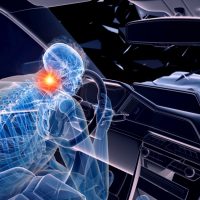The Long-Term Dangers of Soft Tissue Injury After a Car Accident

Not all car accident injuries are readily apparent. While a broken bone or a cut from shattered glass is clearly identifiable, other injuries may be hidden for days or weeks after an accident. Some injuries may appear minor but develop over time. Particularly in minor to moderate impacts, soft tissue injuries can develop and be overlooked by accident victims. Read on for a discussion of the dangers of soft tissue injuries after car crashes, and reach out to a dedicated Lancaster car accident lawyer if you or a loved one has been injured by a negligent driver in the Antelope Valley.
What are soft tissue injuries?
Soft tissue injuries are injuries that affect the muscles, tendons, or ligaments in the body, as opposed to broken bones or organ damage. Soft tissue injuries can arise due to overuse over time, or as a result of sudden trauma. Soft tissue injury can lead to swelling, pain, bruising, and limitations on functionality and range of motion for weeks, months, or even years after an accident.
Common soft tissue injuries in car crashes
Soft tissue injuries are extremely common following car crashes, even if the accident happened at low speeds. Some of the most common soft tissue injuries include the following:
Sprains. A sprain occurs when the ligaments that connect your bones become overstretched as a result of sudden impact. Those ligaments may overstretch or tear, preventing the body’s joints from remaining properly stabilized or supported. In car crashes, sprains are especially likely to occur in the neck when a person’s head is thrown in different directions from their torso, leading to whiplash injury. Sprains also commonly affect the wrists, ankles, knees, shoulders, or back following a car crash.
Strains. Strains, like sprains, are likely to occur due to the impact and jolting movement caused by a car crash. Strains are injuries to the muscles or tendons which attach muscles to bones. Strains can be extremely painful and lead to swelling, muscle spasms, weakness, cramping, and functional limitations.
Contusions. “Contusion” is the medical term for a bruise. Bruises are caused by a singular or repeated blow; they occur when the underlying muscle fibers and connective tissue are crushed without breaking the skin. Blood leaks to the surrounding tissue, causing the purpling and discoloration associated with a bruise. Contusions typically go away over time but can be extremely painful and functionally limiting until they heal.
Lacerations. A laceration is a cut or gash. Lacerations are common in car accidents in which shattered grass or road debris hits a crash victim, tearing the skin. Lacerations can range from minor to major, but even small cuts can become infected, especially if road debris gets under the skin. Severe cuts can leave lasting scars and cause permanent disfigurement.
If you or someone you care about has been injured or killed by a negligent driver in California, talk to a seasoned and effective Lancaster auto accident attorney about pursuing a claim for damages by calling the Kistler Law Firm at 661-206-6990.

